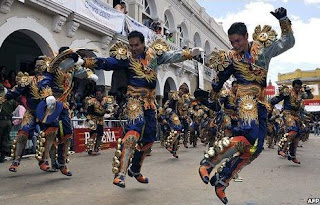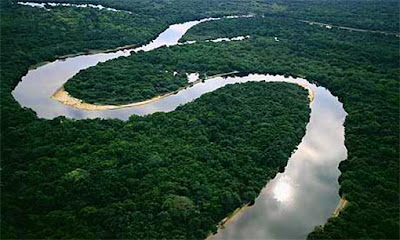Peru is a diverse country full of ancient wealth, rich in tourist destinations. You can find many things to do in the day: from a walk to the historic center to cross Lake Titicaca in "Caballitos de Totora" reeds boats . Ecotourism practice while Peruvians eat the best dishes, all at unimaginable prices. Tourists are always received with great affection, friendly atittude and peruvians make them feel at home.
Below you can find 10 reasons to visit Peru:
1. One of the most biodiverse countries in the world:
It is one of the countries with more diversity of natural resources in the world. The Peruvian flora has given the world the greatest variety of plants. The country retains many nature reserves such as Ballestas Islands in Ica and the National Park of Manu in the Peruvian jungle.
It is one of the countries with more diversity of natural resources in the world. The Peruvian flora has given the world the greatest variety of plants. The country retains many nature reserves such as Ballestas Islands in Ica and the National Park of Manu in the Peruvian jungle.
 |
| Ballestas Islands |
2. The exquisite Peruvian cuisine
Eating in Peru is feeling aromas and flavors to enjoy, meet fabulous and exotic ingredients. With its species, animals, fruits, vegetables and fish originating in the country, enjoy a Peruvian dish is a unique experience.
 |
| Stuffed hot peppers with Potatoe Casserole |
3. Its geography is unique
The country has a variety regions with great diversity of landscapes. The coast has full sun and long beaches. The Highlands displays a large territory and the forest has a wonderful overgrown jungle, exotic and wild.
 |
| Peru divison in Coast, Highlands and Jungle |
4. It retains an old story
Peru has a rich and ancient culture. There are many archaeological sites to visit such as ancient ruins, colonial churches, valleys and landscapes, thermal baths, historic sites, pre-Inca and Inca sites, the Uros floating city and Aboriginal communities and native species.
 |
| Lord of Sipan Tomb |
5. The historic sanctuary of Machu Picchu
It is a World Heritage Site, now called Historic Sanctuary, as part of the Sacred Valley. Considered one of the new 7 wonders of the world, is located in Cuzco. There are several ways to get there: By train, bus or by the ancient Inca path.
It is a World Heritage Site, now called Historic Sanctuary, as part of the Sacred Valley. Considered one of the new 7 wonders of the world, is located in Cuzco. There are several ways to get there: By train, bus or by the ancient Inca path.
 |
| Machu Picchu |
6. Mix and variety of cultures
Each culture has its own characteristics that make them unique, in the coast, mountains or jungle. Each village has its own customs, rules, typical clothes, music and food. |
| Colca Valley |
There are an infinite variety of sports that can be practiced because the geographical nature encourages tourists to climb mountains, sailing, conduct tours, make the route of the Inca in Cuzco, crossing the Andes, navigate the Amazon River, paddle in "caballitos de totora" reeds boats on Lake Titicaca in Puno, mountain biking, practice paragliding in Costa Verde, surfing beaches and more.
 |
| Amazon Jungle |
8. Cultural events and excursions
Some of the most frequented places are the "peñas folckoricas" where you can enjoy peruvian typical dances and food, craft fairs and fiestas patronales.There are also groups of Spanish rock and salsa outdoors or chamber music at no cost.
 |
| Typical dances |
When a tourist arrives to Peru is treated with kindness. Peruvian people make you feel welcome and comfortable. Especially people from the mountains and the jungle are very hospitable and many people keep their doors open wide.
 |
| Local people of Uros Island |
10. A variety of accommodations and affordable prices
You can find plenty of places to stay, from youth shelters, backpackers hostels to luxury hotels in Lima. Public transport is accessible. On the other hand, there is diversity of shops, craft fairs, markets, typical Peruvian clothes or products at low prices.
 |
| Larcomar Shopping mall |






